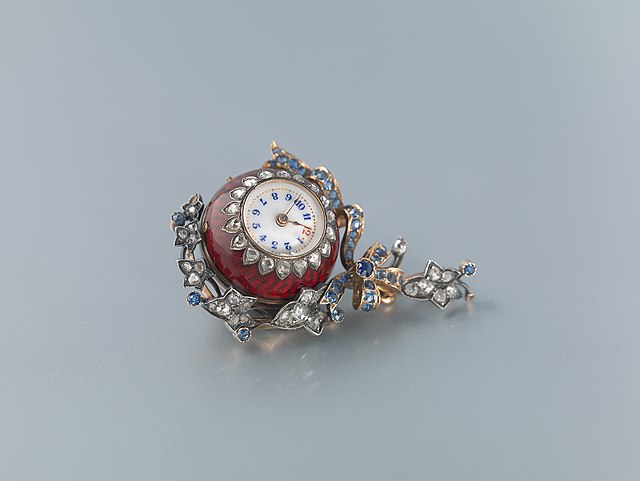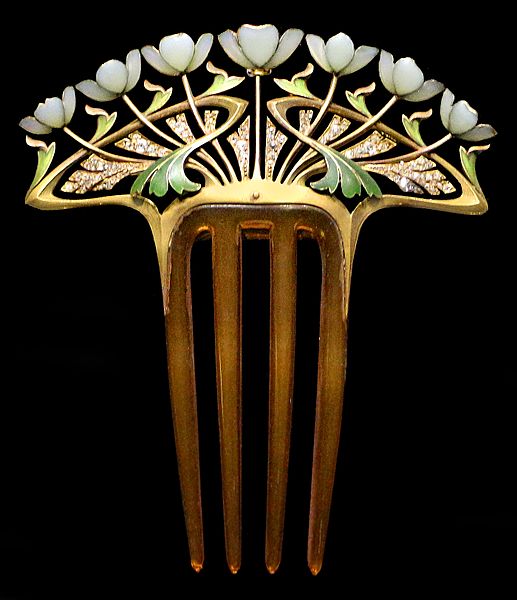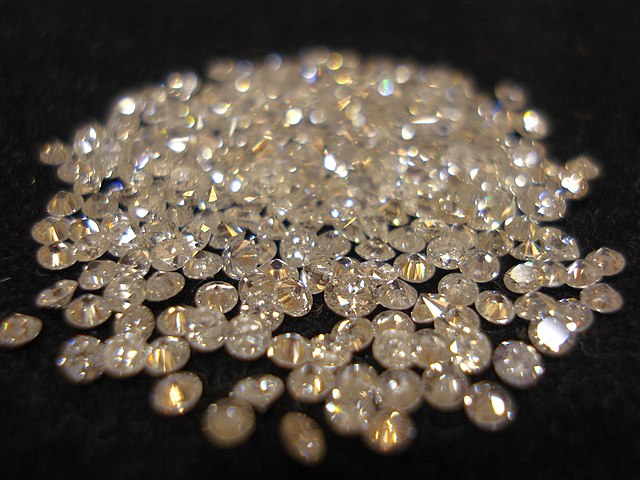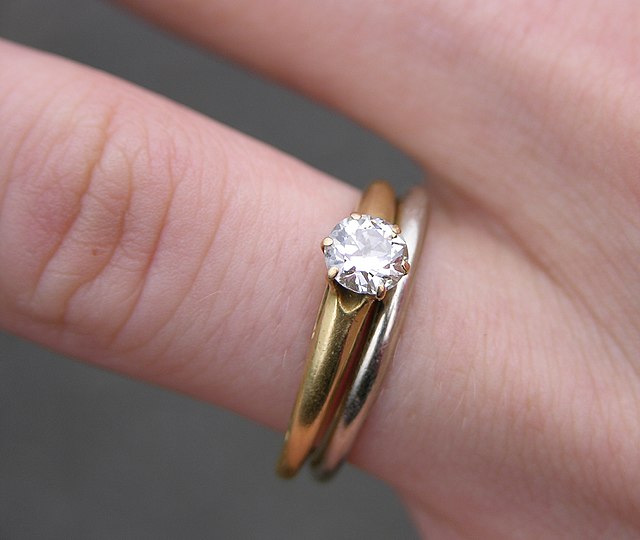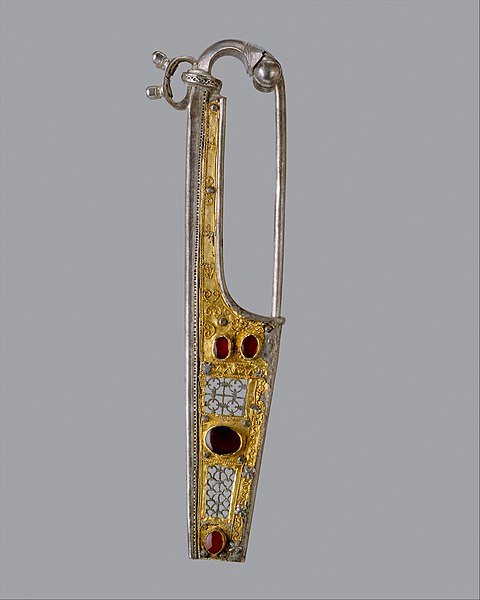Jewellery consists of decorative items worn for personal adornment, such as brooches, rings, necklaces, earrings, pendants, bracelets, and cufflinks. Jewellery may be attached to the body or the clothes. From a western perspective, the term is restricted to durable ornaments, excluding flowers for example. For many centuries metal such as gold often combined with gemstones, has been the normal material for jewellery, but other materials such as glass, shells and other plant materials may be used.
A gold, diamonds and sapphires red guilloché enamel "Boule de Genève", a type of pendant watch used as an accessory for women. An example of an object which is functional, artistic/decorative, marker of social status or a symbol of personal meaning.
Hair ornament, an Art Nouveau masterpiece; by René Lalique; c. 1902; gold, emeralds and diamonds; Musée d'Orsay (Paris)
Diamonds
A diamond solitaire engagement ring
A brooch is a decorative jewellery item designed to be attached to garments, often to fasten them together. It is usually made of metal, often silver or gold or some other material. Brooches are frequently decorated with enamel or with gemstones and may be solely for ornament or serve a practical function as a clothes fastener. The earliest known brooches are from the Bronze Age. As fashions in brooches changed rather quickly, they are important chronological indicators. In archaeology, ancient European brooches are usually referred to by the Latin term fibula.
Wing Brooch, 2nd century AD, Metropolitan Museum of Art
Bronze Age brooch
Bow brooch, Iron Age
Trumpet brooch, Iron Age

